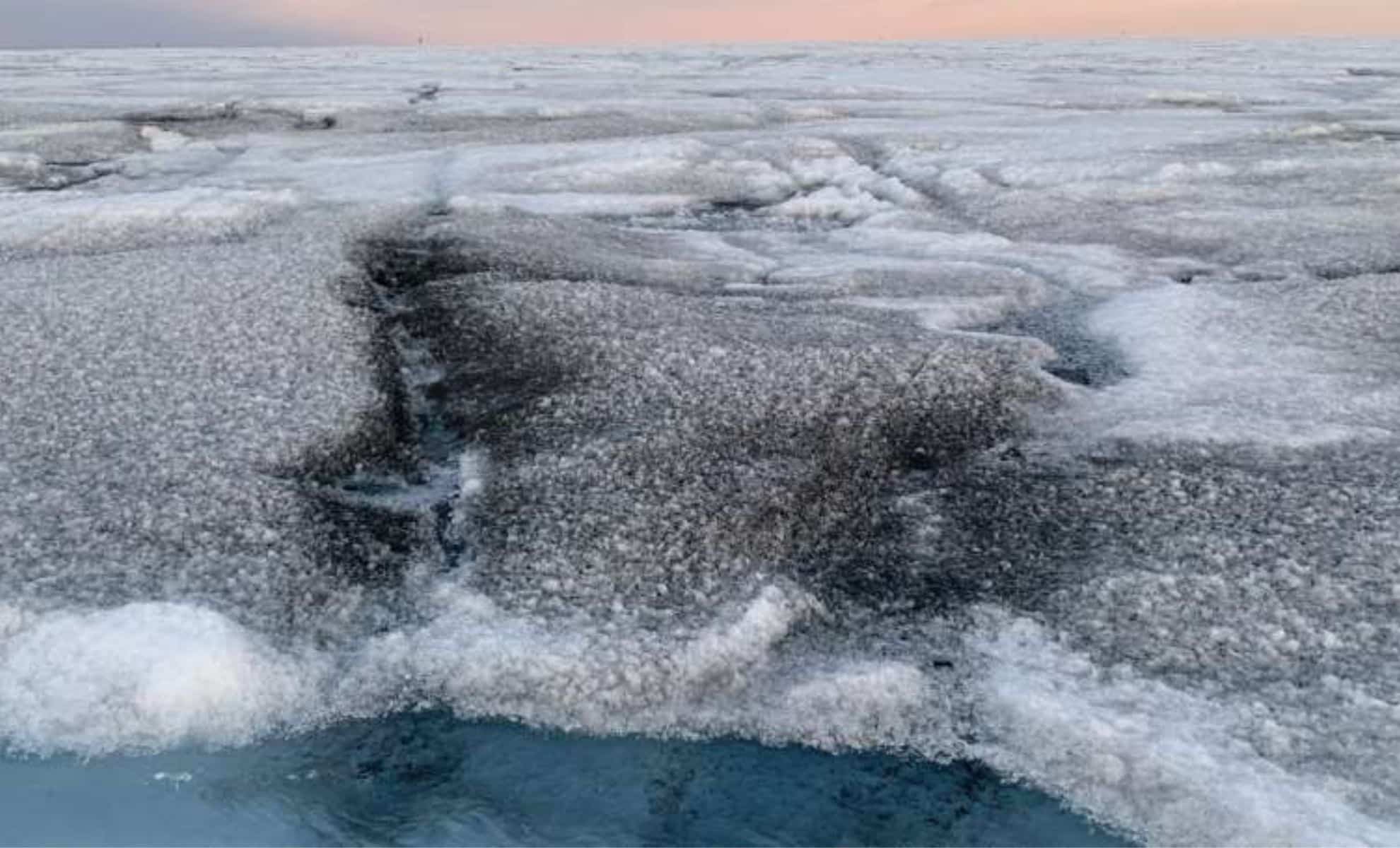
Recent studies have uncovered a surprising link between algae and the rapid melting of Greenland’s ice sheet. With global temperatures on the rise, pigmented algae, specifically varieties like Ancylonema, are flourishing on the ice’s surface. These organisms significantly darken the ice, enhancing its ability to absorb heat and further accelerating melting. This finding raises alarms about the stability of the Greenland Ice Sheet and suggests that the spreading algae may contribute to rising sea levels.
The implications of this algal bloom could be substantial. As these algae, which have been present for some time, begin to proliferate across larger areas of the ice sheet, they may worsen the already accelerating ice loss. Researchers have long recognized that darker surfaces are better at absorbing heat than lighter ones, creating a dangerous feedback loop that could further expedite the melting process.
The Algal Influence on Greenland’s Ice
While algae have always existed on ice sheets, their current rapid expansion is unprecedented. As global temperatures rise, the snowline in Greenland is shifting upward, exposing more ice to the elements. This creates ideal conditions for the growth of algae, particularly Ancylonema, in the ablation zones where the ice undergoes seasonal melting. This algal growth darkens the ice surface, enhancing its capacity to absorb sunlight and accelerating melting rates.
James Bradley, a researcher at the Mediterranean Institute of Oceanography, emphasizes the potential consequences of intensified algal blooms for future predictions:
“While these algae are not a new occurrence, an increase in their intensity or spread is crucial to consider when projecting future sea level changes.”
As the ice absorbs more sunlight, it melts at an increased rate, initiating a feedback loop where ice loss facilitates further algal growth. This self-propagating cycle could render the Greenland Ice Sheet more susceptible to rapid melting, making it a pivotal factor in global sea level rise. The significance of this process was underscored in a study published in Nature Communications on February 19, 2025, highlighting how biological influences like algae are becoming increasingly important in the ice dynamics of Greenland and their contribution to global sea level rise.
Decoding the Feedback Mechanism
In their research, Bradley and his team gathered algal samples from the southwestern edge of the Greenland Ice Sheet, employing advanced imaging technologies to analyze the algae. Their results indicate that these organisms thrive even in nutrient-poor environments, making their resilience particularly noteworthy. Despite the scarcity of resources, the algae are thriving, likely supported by increasing temperatures and melting ice.
As global warming increasingly affects the region, scientists express concern that algae may spread to higher altitudes on the ice sheet as the snowline rises. This could intensify melting in previously unaffected areas, leading to even more rapid ice loss. Christopher Williamson, a researcher at the University of Bristol, who was not involved in the study, noted the significance of this discovery in understanding algal behavior in challenging conditions:
“A key factor in deciphering this issue is determining how much nutrient the glacier algal cells require and whether they can effectively utilize the limited nutrients in their environment. This study excels in demonstrating these findings using innovative methodologies.”
This discovery shines a light on the intricate relationships between climate change, biological activity, and ice sheet dynamics, which could greatly influence future climate projections. The rapid growth of algae on the Greenland Ice Sheet may lead to higher sea level rise projections in the future.
Consequences for Sea Level Rise in the Future
The newly identified impact of algae on Greenland’s ice could have significant ramifications for predictions of future sea level rise. As Alaskan glaciers and polar areas become increasingly at risk, these findings underscore the necessity for a revised understanding of how biological factors, including algae, influence melting. Greenland’s ice is one of the main contributors to global sea levels; continued melting could imperil millions of individuals globally, particularly those in coastal communities.
This research paints a clearer picture of the driving forces behind Greenland’s ice melt, highlighting the crucial role of monitoring biological influences alongside traditional climate models. While past studies have focused on temperature and ice sheet dynamics, this discovery draws attention to the biological factors that may significantly reshape future projections.
By gaining insight into how algae and other elements affect ice melt, researchers can create more precise models for predicting sea level rise and prepare for possible impacts. The feedback loop formed by algae’s involvement in melting ice serves as a reminder that climate systems are intricately interconnected, where even minor biological changes can have profound, lasting consequences for the planet’s climate and sea levels.









